4 Big Signs to Guarantee Your Performance Won't Turn Around
Got gaps?
How do you know whether your performance is going to turn around?
That’s a great question.
So many leaders I serve are trying to turn their campus performance around.
Some are academic, others are operational. Both impact reputation and demand.
Sometimes that means moving a stuck or declining project into growth. Other times, they sense they’re losing momentum and want to gain a foothold for tomorrow.

These are tumultuous times for so many campus leaders as entire systems are being disrupted.
Good news… You are not alone and have friends in the hotel industry, movie theatres, taxi companies, news, music industry, churches, restaurant industry, and malls – all struggling with seismic shifts in how people currently behave.
It’s hard to be a cab company in an era of Lyft, a grocery store in the era of UberEats, a theatre in the era of Hulu, Amazon Prime, Netflix, and Apple TV, a brick-and-mortar store in the era of Amazon, or a church in the era of a million online options and the rise of post-modern America.
Likewise, every institutional leader is hoping to snap their fingers and magically go back to 1990 where they were the best (and perhaps only) show in town.
In light of all that, how do you know if your system will stay viable (in demand) in the year 2030?
I’m an optimist and a prisoner of hope. I believe you can do far more than you can imagine, and that the future is abundantly bright. I’ve also seen campus leaders spin their wheels while fight losing battles left and right. Nobody wants to be the person forced to sell CDs in the age of Spotify.
Unwittingly, many of you are doing just that.
Community trust and your capture rate of students is lower than most leaders desire or know how to manage. So, how do you know whether things will turn around?
While that’s tough to answer universally, there are common patterns I’ve seen in leadership that are worth naming.
Here are four big signs to guarantee your performance won’t turn around.
These are gut checks, so buckle up…
1. You’re Jamming What Worked (In The Past) Into A World That No Longer Exists
At the most basic level, too many leaders try to revive what was in demand in the past rather than find what will work in their current reality. That’s understandable for a few reasons.
First, most humans are wired to be most comfy with the known than with the unknown.
If you remember something that worked, it’s easier to say “let’s spin that wheel again” than trying to blaze an unknown trail into the future.
Building a nicer, shinier taxi fleet is an easier-to-grasp idea than imagining the day when people use private car sharing to hail rides off an app.
Second, the past has a nostalgia the future never does. We tend to romanticize the past and worry about the future, and leaders easily forget how innovative and controversial some of the things were a decade ago (think 1000 songs in your pocket, using your credit card online, or checking out your own groceries).
I’m not against the past at all, but if most of your efforts are spent trying to revive what worked yesterday, you’re probably going to have a less preferable tomorrow.
Ask yourself, is most of your energy spent trying to revive what was, or build what will be? Your response will be the palm-read of your future.
2. Your Metrics Are Tethered To The Past, Not To The Future
Every leader has metrics they track, but often leaders track the wrong metrics. Tracking overall enrollment, retention, course completion, and graduation rates are necessary, but when you only see general data, you can get into long debates about what it means. 15 people will come up with 15 reasons why things are flat or underperforming.
The smarter we are, the better excuses we can generate for why performance is lacking.
Rather than tracking conventional data, you might start tracking demographic data. How many young families new to your community are you seeing? How many single parent homes are you serving?
Tracking demographics can show you trends (either positive or negative trends) that give you information on whether there’s light at the end of your current tunnel.
And don’t ignore the internet. A ridiculous number of campus leaders either don’t track their online data or don’t know what to do with what they find beyond knowing whether it’s growing or not growing.
Google Analytics and social apps can give you a crazy amount of data on who you’re reaching or not reaching (I know, this is scary, but this is the world we live in and I’m trusting you’re a leader who is committed to using these stats to make the world a better place.)
For example, I know the bulk of the readers of this blog are between 35-45 years of age, and the top cities for my readers and listeners (hello Minneapolis, Phoenix, Atlanta, New York, Los Angeles, and London…).
What are some specific digital artifacts that you might want to track to see if you’re making inroads or not?
Side Note: You might do community focus groups with people curious about your campus/district and others who have recently left for another to discover what’s what.
You tend to manage what you measure. So, measure better.
Change is inevitable. Irrelevance isn’t.
But the reality is that far too many campuses aren’t shifting quickly enough.
That’s why I’m on tour with the RECLAIM MOMENTUM {LIVE} Keynote. It’s a value-packed event where we’ll dissect the 6 Lead Measures of Building Irresistible Campus Culture and get equipped with a framework to lead successful change with less resistance.
3. You’re More Committed to the Method Than You Are To the Mission
This is one of the most telling signs of the success or demise of your turn around. Ask yourself: Are you more committed to the method than you are to the mission?
Even though almost everyone I ask answers that question by saying “the mission,” reality suggests differently.
Fundamentally in an era of massive disruption, the mission is fixed. The methods flex.
The market for the mission never goes away, it just changes.
The mission is:
✅ Transportation. The method is taxis, Uber or Lyft.
✅ Photography. The method is Instagram and smartphones, or film and printed pictures.
✅ Travel. The method is a hotel or Airbnb.
In education, the mission is to prepare students for their preferred future. The method is on- campus learning, virtual learning, public schools, private schools, 4-year university, 2-year transfer colleges, certification programs, workforce, etc.
Here’s the bottom line: To preserve the mission, you must constantly reinvent the method.
I love writing. My blog has doubled in downloads each month since 2021 and it’s been a much bigger success than I ever dreamed. My colleagues ask me if I’ll write forever. When I tell them no, they often look surprised.
Here’s why I say no: My mission isn’t blogging. It’s just a method. My mission is to optimize higher team performance. Right now, blogging is a great method. When it stops being effective—or before it stops being effective—I’ll reinvent.
4. You Constantly Criticize The People Who Are Gaining Traction
A final sign that you will get and stay stuck is when you persistently criticize the people in your sector who are gaining traction.
It’s easy to hate the innovators, to make fun of the next-gen learning providers. Those who are bending or breaking tradition or who just don’t understand the value of a conventional “campus experience.”
At a more sinister level, you may even villainize the motives of people who are reinventing the learning experience.
So often leaders on the decline adopt a critical spirit about everything around them.
Just stop. Adopt a critical mind, not a critical spirit.
Great leaders have critical minds, not critical spirits.
Be a student. Study what’s working and examine what you do because of past practice rather than impact. Study it hard enough until you understand it.
Stop the eye-rolling.
Listen. Learn.
Humble yourself.
A critical mind will figure out why certain things are working and why other things aren’t. A critical spirit shuts down all learning and will accelerate your expiration date.
Stop being a critic. As a student, you’ll be far more likely to push against the gravitational pull of average, underperformance, and obsolescence.
Change is inevitable. Irrelevance Isn't.
What’s your strategy to prepare for the future? What’s your strategy for leading change?
I’m on a coast-to-coast tour with the
RECLAIM MOMENTUM {LIVE} Keynote. It’s a value-packed event where we’ll:
✅ Dissect the 6 Lead Measures of Building Irresistible Campus Culture
✅ Equip your team with a framework to lead effective change with less resistance.
It’s time to get a framework for leading that change that doesn't tear your campus apart.
Without a solid strategy, all you get is pushback, opposition, confusion, and anger.
With a proven strategy, you’ll become equipped to lead something bigger and more impactful than you might ask or imagine.
Register for RECLAIM MOMENTUM {LIVE} – HERE
Keep ‘er growing!
More Blog Articles



